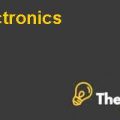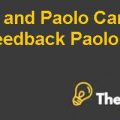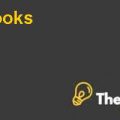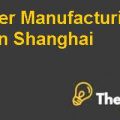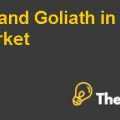Bidding for Hertz Case Study Solution
Introduction:
The ford Motor Company has planned to sell its wholly owned subsidiary, Hertz. The Carlyle group and its partners are finalizing the terms between them in order to make bid for the purchase. It has been analyzed that in June 2005, Hertz have been entered into a dual track process. Consequently, the company would be facing wither the sale of company or an initial public offering (IPO).
Hertz is one of the largest car rental company, which is operating in 145 countries. Moreover, it is also existing in the equipment rental company operating in 380 locations. However, the core business of the company is to deal with rental cars and it holds 80% sales of the company. Ford motor had purchased 100% stake of Hertz in 1994.
On the other hand, the acquirer, Carlyle group is one of the biggest private equity firm. Moreover, the firm is being an expert in transportation and automobile sector. As the company has invested in many automotive companies.
Ideal buyout target:
An ideal buyout target for a private equity is the one with poor operations, uneven and lower cash flows and poor management of the company. As a result, the private equity would further invest in it and increase its reputation to sell it later. However Hertz is a market leader company operating internationally in many locations. Moreover, the management and financial structure of the company is experiencing high level of leverage. Therefore, Hertz is not an ideal buyout for the Carlyle group.
On the other hand, the Carlyle group wanted to make its existence in car renting industry. Firm has analyzed other firms before thinking for hertz due to its reputation. However, the company likes to purchase “Orphans Corporate”. This term refers to the companies who are performing well but they are not the part of core business of the company. Therefore, these companies are not tend to receive sufficient andrequired attention of company’s management.
Bidding for Hertz Harvard Case Solution & Analysis
Exit mechanisms:
There are three types of exit mechanisms used by the company:
- Sales: if the parent company would be following exit strategy of selling its subsidiary, the company would be able to proceeds the upfront cash of the company as well as the execution would be certain. As the financial performance of Ford is declining, whereas, Hertz performance is increasing overtime. In addition, the company would be free from ownership responsibilities. On the other hand, the parent company would be losing the source of revenue and a substantial amount of time and resources would be required.
- IPO: if the parent company would be using Initial Public Offerings in order to exit itself from the ownership of company, the parent company would be achieving the access to capital markets and lower financing cost would be required. In addition, the increase in liquidity could be utilized. On the other hand, it would require higher time and resources of the company. Moreover, the profit and control of the company would be diluted among shareholders. In addition, company would lose its confidentiality by exposing strategies in front of shareholders and compliance burden would be increased to the company
- Dual Track: Dual track refers to the mixture of both the above described strategies. The benefit of using dual track includes that parent company would have to be less dependent on market conditions. It will also increase the level of flexibility of the company. In addition, the leverage for sales process would be increased. On the other hand, the management if eh company would be distracted and thus, will increase its business risk. In addition, the priorities would be competing and could lead to sub optimal results.
Current Mergers:
- Deal between Sunoco Logistics and Energy Transfer Partners worth $52 billion
- British American Tobacco acquired Reynolds American for $58 billion...................
This is just a sample partial work. Please place the order on the website to get your own originally done case solution.


